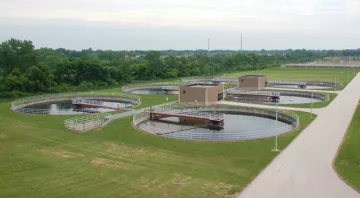
The average U.S. resident produces 100 gallons of wastewater each day, according to the Environmental Protection Agency (EPA). So what happens to that water after it’s used?
See for yourself during Woods & Wetlands’ May 24 field trip to the North Shore Water Reclamation District’s Gurnee laboratories and plant.
The reclamation plant tour is the logical follow-up to last year's tour of the Central Lake County Joint Action Water Agency (CLCJAWA) pumping station in Lake Bluff. There, we saw how Lake Michigan water is turned into the clean water delivered to our taps.
A century of progress
In the early 20th century, most towns along Lake Michigan discharged partially treated or untreated sewage and industrial waste directly into the lake. Of course, Lake Michigan also was the main source of drinking water for those communities.
To address this major health hazard, Lake County’s sanitary district was established in the lead-up to World War I. Since then, about 100 miles of intercepting sewers, 10 pumping stations, and three treatment plants have been built to treat the wastewater.
The district treats about 63.4 million gallons of wastewater a day. Physical, biological, and chemical processes, according to the highest government standards, are applied before treated water is discharged. No reclaimed water is released into Lake Michigan, and the quality of effluent is often superior to the discharge stream.
This field trip is being offered by popular request. To secure your place on the tour, REGISTER HERE EARLY
Field trip participants will meet at 1 p.m. on Friday May 24, in front of the lab building at the North Shore Water Reclamation District facility, 14770 William Koepsel Drive, Gurnee.
Image provided by NSWRD